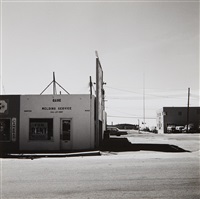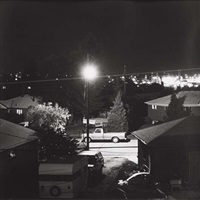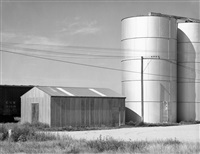Photoshoot Plan
For my rural landscapes shoot, I am planning to take pictures above St Ouen’s bay in St Peter and St Mary. I’ll try to take photos on a sunny day, but I think that some clouds could add moodiness to my images which could improve them – for example, moody skies adding a more dramatic look to my images. In my images, I will feature fields and farmland to emulate the work of Don McCullin, one of my studied artists.


Contact Sheets
Below are images of my contact sheets, pictured in grid view in Lightroom.

In these images, I had trouble with overexposure – I fixed this by turning it down and changing the setting to manual focus on my camera which helped. After putting my images in Lightroom, I used the P and X tools to filter out my good and bad images. I then went through my selected images, picking a narrower selection, and using a red colour filter to highlight them.

Here I struggled with overexposure again, but went into manual mode and turned the exposure down which helped. Pictured in red are my best images, edited in black and white.

Evaluation
Overall, I think this photoshoot had good and bad points. – The weather and cloud were quite variable which made the lighting inconsistent in some of my images. – This made them a little tricky to edit. This also caused some overexposure which meant the skies weren’t as moody and dramatic as I would have liked, but this was not noticeable in some images and was helped with editing later in my process. There were good bits about this photoshoot though too. In particular, in some of my better images, I achieved the moody skies and dramatic landscape look that I wanted. I also have some images that have some interesting leading lines like in Fay Godwin’s images, which I really like. If I was to redo this shoot, I would maybe shoot on a misty or foggy day, near some cliffs or the sea on a day with choppy conditions or some big surf, to respond more to the idea of romanticism.
Best Images
My best images unedited

I then used Lightroom to adjust my images in black and white. I then found a pattern of editing that I found worked quite well for my images. I increased contrast, then decreased highlights to bring out the moody skies in some of my images. I did this to emulate the work of Don McCullin, who uses dramatic skies in his images, relating to the feature of the sublime in romanticism.

Also in my editing, I added grain and texture to my images to create a film-like effect. To make this effect even further in the future I could shoot in a black and white film camera on a landscape shoot.
Edited Final Images

I chose this image as one of my best due to a few things. For example, I love the dramatic sky and how it looks like it is looming over the hills. The leading line that carries the eye from the left to the right over the top of the hill is my favourite thing about this image – It reminds me of Fay Godwin, one of my chosen artists. Furthermore, I think my editing was quite effective here. – decreasing highlights to make the sky work well here I think, as well as my use of contrast.

My favourite part of this image is the strong leading lines. These leading lines include the road to the right of the image, which bends into a circular shape to the right, creating circular shapes. The leading line of the field and the plastic wrap of the crops are broken up by a verge, which creates contrast between the bright white of the plastic, and the darker tones in the road and verges to the right. I also like how these lines lead to the vanishing point which features the tower in the distance. This tower is centred, which I think helps to keep a balanced composition in the image.

I chose this image as one of my final ones because of the powerful sky, and also the interesting composition. The powerful sky in this image includes elements of the Sublime and the idea of romanticism. The composition is unconventional here: the sky takes over almost the whole image, which could show the power of nature. The contrast between light and dark tones in this image was achieved by my editing mostly, which helped to keep the sky dramatic and increase the contrast in the field too.

I chose this as one of my final images due to the composition, and the way the eye is led down towards the horizon, with the sea. The trees and powerline frame the path in the middle nicely, and the clouds are slightly dramatic with light peeking through.


























































